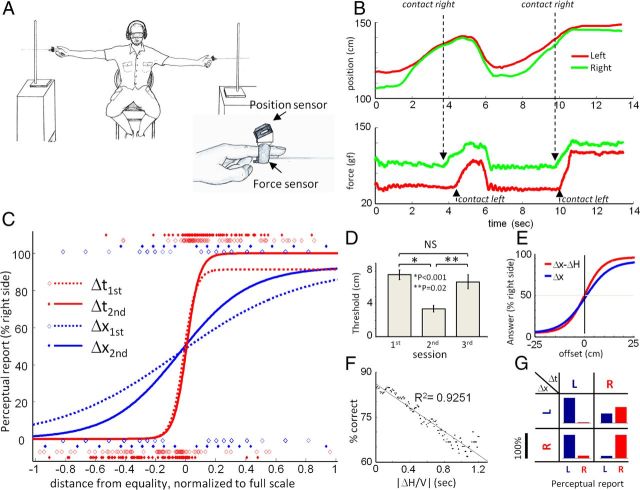Figure 1.
Performance of bilateral object localization via manual whisking. A, Experimental setup. Participants sat centered between two poles, one of which was randomly selected to be more posterior by 1–20 cm. Attachment of an artificial whisker, position sensor, and force sensor to an index finger is depicted. B, Position (top) and force signals (bottom) from left and right hands during a single trial. Position signal indicates distance of the whisker base from the posterior wall. Force signal indicates contact time and force at the whisker base. C, Psychophysical curves. Relationships between participants' perceptual reports and differences in touch time (Δt) or pole position (Δx) were normalized for the first two sessions. Data were fitted by sigmoid functions after boxcar averaging (width 0.1 of full scale; Table 1). D, Average thresholds attained in three consecutive sessions (error bars indicate SEM). E, Effect of hand coordination on performance. Psychometric functions were computed, as in C, for Δx and Δx − ΔH with data pooled from first and second sessions (Table 1). F, Localization accuracy (% correct) as a function of ΔH/V for all trials in both first and second sessions. G, Confusion matrix of participants' perceptual reports. Data from both first and second sessions. Percentage of “left” (blue) and “right” (red) perceptual reports are shown for each combination of cues determined from Δx (rows) and Δt (columns). Scale bar, 100%.

